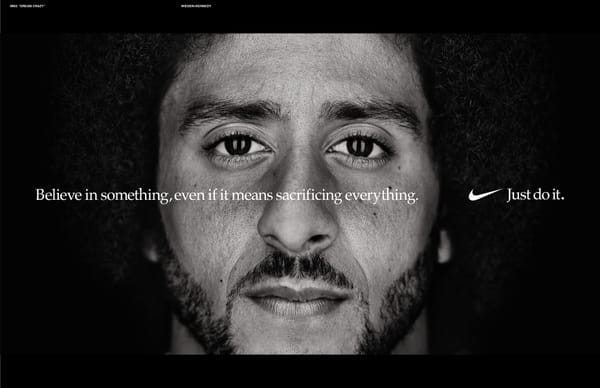The Customer Journey: Crafting Stories That Connect and Convert
In this guidebook, we'll explore how to weave compelling narratives at every stage of the customer journey. From the first spark of awareness to the warm glow of brand advocacy.

Table of Contents
- Introduction
- The power of storytelling in the customer journey
- Overview of the guidebook's contents
- Understanding the Customer Journey
- Defining the stages of the customer journey
- The importance of storytelling at each stage
- Awareness Stage: Capturing Attention
- Crafting an origin story that resonates
- Using curiosity gaps to draw customers in
- Case study: A small business success story
- Consideration Stage: Building Trust
- Developing character-driven narratives
- The art of the problem-agitate-solve (PAS) framework
- Practical exercise: Creating your brand's "helper" persona
- Decision Stage: Inspiring Action
- Storytelling techniques for overcoming objections
- The power of customer success stories
- Case study: Turning testimonials into compelling narratives
- Retention Stage: Fostering Loyalty
- Creating a community through shared stories
- The role of behind-the-scenes content
- Practical exercise: Developing your brand's ongoing narrative
- Advocacy Stage: Empowering Brand Ambassadors
- Encouraging user-generated content
- Storytelling strategies for referral programs
- Case study: A small business's journey to cult status
- Measuring the impact of your advocacy storytelling
1. Introduction
In the bustling marketplace of ideas and products, how do you ensure your small business doesn't just whisper, but sings? The answer lies in the age-old art of storytelling, specifically tailored to your customer's journey.
Imagine walking into a local art supply store. The walls are adorned with vibrant paintings, each with a small plaque describing the local artist and their inspiration. As you browse, the owner approaches, not to sell, but to share the story of how each brush and pigment has played a role in creating the masterpieces around you. Suddenly, you're not just shopping for art supplies; you're participating in a rich narrative of creativity and community.
This, in essence, is the power of storytelling in the customer journey. It transforms mere transactions into meaningful experiences, casual browsers into loyal customers, and one-time buyers into passionate brand advocates.
In this guidebook, we'll explore how to weave compelling narratives at every stage of the customer journey. From the first spark of awareness to the warm glow of brand advocacy, we'll uncover the storytelling techniques that can elevate your small business from a mere option to an irresistible choice.
So, grab your favourite notebook (or digital device), and let's embark on a journey that will transform your marketing from mundane to magnificent. It's time to tell your story, and write a new chapter in your business success.
2. Understanding the Customer Journey
Before we dive into the art of storytelling, let's set the stage by understanding the customer journey. Think of it as the epic tale of how a stranger becomes not just a customer, but a loyal fan of your brand.
Defining the Stages of the Customer Journey
- Awareness: The "Once Upon a Time" moment when a potential customer first hears about your brand.
- Consideration: The "Rising Action" where they start to evaluate your offering against their needs and other options.
- Decision: The "Climax" where they choose to buy (or not to buy) from you.
- Retention: The "Falling Action" where you work to keep them satisfied and coming back.
- Advocacy: The "Happily Ever After" where delighted customers spread the word about your brand.
The Importance of Storytelling at Each Stage
Storytelling isn't just for bedtime or bestsellers. It's a powerful tool that can guide your customers through their journey with your brand. Here's why it matters at each stage:
- Awareness: Stories cut through the noise, making your brand memorable in a sea of options.
- Consideration: Narratives help potential customers see themselves benefiting from your product or service.
- Decision: Stories can provide the emotional push needed to choose your brand over competitors.
- Retention: Ongoing narratives keep customers engaged and reinforce their choice.
- Advocacy: Compelling stories give customers something to share, turning them into brand storytellers.
As novelist Chuck Palahniuk once said, "People don't want to be told what to do; they want to be shown how to live." This is the essence of why storytelling is so crucial in the customer journey. It's not just about conveying information; it's about creating feelings, connections, and memories.
In the following sections, we'll explore specific storytelling techniques for each stage of the customer journey. Get ready to transform your marketing from a monologue into a captivating dialogue with your audience.
3. Awareness Stage: Capturing Attention
Picture this: You're at a crowded trade show, surrounded by booths all vying for attention. How do you make your booth the one everyone remembers? This is the challenge your brand faces in the awareness stage. Let's explore how storytelling can help you break through the noise and capture attention.
Crafting an Origin Story that Resonates
Every great brand has a compelling origin story. It's the "once upon a time" that draws people in and makes them want to know more. Here's how to craft yours:
- Find Your 'Why': What made you start your business? Was it a personal frustration, a gap in the market, or a desire to make a difference?
- Identify the Conflict: What challenges did you face? People love underdog stories.
- Highlight the Turning Point: What was the 'aha' moment that set you on your current path?
- Show the Transformation: How has your journey changed you and your customers?
Remember, authenticity is key. As journalist Anna Quindlen puts it, "The thing that is really hard, and really amazing, is giving up on being perfect and beginning the work of becoming yourself."
Using Curiosity Gaps to Draw Customers In
A curiosity gap is the space between what we know and what we want to know. It's a powerful tool for capturing attention. Here's how to use it:
- Ask Intriguing Questions: "What if you could [solve a common problem] in half the time?"
- Tease with Partial Information: "We've discovered a way to [achieve a desirable outcome]. Want to know how?"
- Create Suspense: "Something big is coming. Stay tuned for a revelation that will change how you [relevant activity]."
Case Study: A Small Business Success Story
Let's look at how "Melodic Minds," a small music education startup, used storytelling to boost awareness:
Melodic Minds' founder, Alex, was a former rock musician who struggled with traditional music education. After years of touring, he realised that many aspiring musicians faced the same challenges he did. He set out to create a method that made learning music as exciting as performing it.
Alex shared his journey through a YouTube series called "From Stage to Teacher." Each video revealed a music learning hack he'd discovered during his career, intertwined with stories from his touring days. The series was educational, entertaining, and highly shareable.
The result? A 300% increase in website traffic and a 200% boost in course sign-ups within six months. People weren't just learning music; they were joining Alex's mission to revolutionise music education.
Key Takeaways:
- Be authentic and vulnerable in your storytelling
- Use personal experiences to make your brand more relatable
- Create content that provides value while telling your story
Remember, in the awareness stage, your goal is not to sell, but to intrigue. Craft stories that make people curious to learn more about your brand. As you move to the next stage, consideration, you'll build on this foundation to deepen the connection with your potential customers.
4. Consideration Stage: Building Trust
Imagine you're at a networking event. You've made a good first impression, but now you need to show that you're worth getting to know better. This is the consideration stage of the customer journey. Your potential customers know you, but are not ready to commit. It's time to build trust and deepen the connection.
Developing Character-Driven Narratives
People don't buy from businesses; they buy from people. Character-driven narratives humanise your brand and make it more relatable. Here's how to create them:
- Showcase Your Team: Share stories about the people behind your brand. What drives them? What expertise do they bring?
- Highlight Customer Characters: Create personas that represent your ideal customers. Tell stories that show how your brand fits into their lives.
- Develop a Brand Personality: Is your brand the wise mentor? The cheerful friend? The innovative problem-solver? Let this personality shine through in your stories.
As filmmaker Robert McKee notes, "Storytelling is the most powerful way to put ideas into the world today." Character-driven narratives create those unforgettable connections.
The Art of the Problem-Agitate-Solve (PAS) Framework
The PAS framework is a powerful storytelling tool that resonates deeply with potential customers. Here's how it works:
- Problem: Identify a problem your customer faces. Make it vivid and relatable.
- Agitate: Explore the consequences of this problem. How does it make them feel? What opportunities are they missing?
- Solve: Present your product or service as the solution. Show how it addresses the problem and alleviates the agitation.
For example:
Problem: "You're passionate about photography, but editing software leaves you frustrated and overwhelmed." Agitate: "This means your beautiful moments are trapped in subpar images, and your artistic vision isn't fully realised. You're wasting time on confusing tools instead of capturing life's precious moments." Solve: "Our intuitive photo editing app uses AI to understand your style and make professional-grade edits with just a few taps, letting you focus on what you love – taking amazing photos."
Practical Exercise: Creating Your Brand's "Helper" Persona
In many stories, the main character has a helper who guides them through challenges. In your brand's story, you are that helper. Let's create your helper persona:
- Identify Your Superpower: What unique skill or knowledge does your brand possess?
- Define Your Helper Style: Are you a wise mentor? A supportive friend? An innovative genius?
- Craft Your Origin Story: How did you gain the ability to help? What's your backstory?
- Show Your Impact: Create mini-stories that demonstrate how you've helped others overcome challenges.
For example, if you run a small personal styling service, your helper persona might be "The Confidence Catalyst" - a friendly, insightful guide who helps people discover their unique style and boost their self-esteem.
Remember, in the consideration stage, you're building a relationship. Use these storytelling techniques to show potential customers that you understand their challenges and have the expertise to help. As trust grows, they'll be more likely to move to the next stage: decision.
5. Decision Stage: Inspiring Action
Picture this: You're about to skydive for the first time. You're excited but nervous, standing at the edge, ready to take the leap. In the customer journey, this is the decision stage. Your potential customer is on the brink of committing to your brand. How do you give them that final push to take the plunge?
Storytelling Techniques for Overcoming Objections
Even at this stage, customers may have lingering doubts. Storytelling can help overcome these objections:
- The "Before and After" Story: Show the transformation other customers have experienced. For example: "Before using our language learning app, Mark could barely order coffee in Spanish. Now, he's confidently navigating business meetings in Madrid."
- The "What If" Scenario: Paint a picture of what could go wrong without your product or service, then show how you prevent that. For instance: "Imagine losing months of work due to a computer crash. With our cloud backup service, your data is always safe and accessible."
- The "Day in the Life" Narrative: Illustrate how your product or service fits seamlessly into a customer's life. For example: "From her morning run to her evening video call with international clients, here's how Sophia uses our noise-cancelling earbuds throughout her day..."
Remember, as psychologist Jerome Bruner observed, "Stories are a culture's coin and currency." Your stories should make the benefits of choosing your brand tangible and irresistible.
The Power of Customer Success Stories
Nothing is more powerful at the decision stage than hearing from satisfied customers. Here's how to craft compelling customer success stories:
- Choose Relatable Protagonists: Select customers who represent your target audience.
- Follow the Story Arc: Begin with their challenge, show how they discovered your brand, and highlight the positive outcome.
- Use Specific Details: Include concrete results and memorable anecdotes.
- Let Them Speak: Include direct quotes to add authenticity.
For example: "Meet Raj, a small business owner who struggled to manage his finances. After discovering our accounting software, he's now saving 10 hours a week on bookkeeping and has doubled his profit margins. 'I used to dread looking at my books,' Raj says. 'Now, I feel in control and excited about my business's future.'"
Case Study: Turning Testimonials into Compelling Narratives
Let's look at how "Swift Soles," a small running shoe company, transformed their testimonials into engaging stories:
Instead of simple quotes like "Great shoes!", Swift Soles created a series called "Miles of Memories." Each post told the story of a runner's journey with their shoes:
"Maria had always dreamed of running a marathon, but knee pain held her back. She was about to give up when she tried Swift Soles. The customised support helped her train pain-free. Six months later, she crossed her first marathon finish line. Maria told us, 'These shoes didn't just support my feet; they carried my dreams across that finish line.'"
These stories not only showcased the quality of their products but also the role the shoes played in achieving customers' goals. The result? A 75% increase in online sales and a surge of customers sharing their own "Miles of Memories."
Key Takeaways:
- Use stories to address and overcome common objections
- Let satisfied customers be the heroes of your brand stories
- Show how your product or service enables customers to achieve their goals
Remember, at the decision stage, your goal is to make choosing your brand feel like the natural, obvious choice. Craft stories that not only inform but inspire action. As customers make that decision to buy, you'll move into the next crucial stage: retention.
6. Retention Stage: Fostering Loyalty
Imagine you're part of a book club. The initial excitement of joining has passed, but now you're building deeper connections with fellow readers. This is the retention stage of the customer journey. You've won their business, but how do you keep them coming back? The answer lies in ongoing storytelling that reinforces their decision and deepens their connection to your brand.
Creating a Community Through Shared Stories
People crave belonging. By fostering a community around your brand, you create a powerful reason for customers to stay loyal. Here's how to use storytelling to build that community:
- Highlight Customer Stories: Regularly feature stories from your customers. This could be about how they use your product, the impact it's had on their lives, or even their own personal achievements.
- Create a Branded Hashtag: Encourage customers to share their own stories using a unique hashtag. This not only generates content but also creates a sense of shared identity.
- Host Storytelling Events: Whether virtual or in-person, create opportunities for customers to share their experiences with each other.
- Develop a Story-Driven Loyalty Program: Instead of just points, create a program where customers "level up" through different chapters of your brand story.
Remember, as anthropologist Margaret Mead said, "Never doubt that a small group of thoughtful, committed citizens can change the world; indeed, it's the only thing that ever has." By creating a community, you're selling more than a product – you're selling belonging.
The Role of Behind-the-Scenes Content
Pulling back the curtain on your business can create a sense of exclusivity and deepen customer connection. Here's how to craft compelling behind-the-scenes stories:
- Day in the Life: Show what a typical day looks like for different team members.
- Product Journey: Tell the story of how your product is made, from concept to delivery.
- Milestone Celebrations: Share the story behind company achievements, big and small.
- Blooper Reels: Don't be afraid to show the mishaps and learning experiences. It makes your brand more relatable.
For example, a small jewellery design business could share a video story of how they source ethical gemstones, showing the designer's trip to meet with miners and select stones. This not only entertains but also highlights the care and ethics behind each piece.
Practical Exercise: Developing Your Brand's Ongoing Narrative
Your brand's story doesn't end when a customer makes a purchase. It's an ongoing narrative that should evolve over time. Here's how to develop this continuing story:
- Identify Key Themes: What are the core values or ideas that define your brand? These should be consistent threads in your ongoing narrative.
- Create Story Arcs: Develop longer story arcs that can unfold over weeks or months. This could be about product development, company growth, or customer success journeys.
- Plan Regular "Episodes": Schedule regular story instalments, whether it's a weekly blog post, a monthly video, or a quarterly magazine.
- Incorporate Customer Feedback: Let customer experiences and feedback shape your ongoing narrative. It shows you are listening and evolving.
- Tie in Current Events: Show how your brand story connects to wider trends or events in the world.
For example, a small adventure travel company could create a year-long story arc called "The Sustainable Explorer." Each month, they could share a new chapter, covering topics like responsible tourism, cultural exchange experiences, and how travel can positively impact local communities. They could tie this into current events like World Tourism Day or relevant environmental initiatives.
Remember, in the retention stage, your goal is to make customers feel that they're part of something bigger by choosing your brand. Consistent, engaging storytelling can transform a one-time buyer into a loyal, long-term customer.
As you master the art of retention storytelling, you'll find that many of your customers naturally progress to the final, coveted stage of the journey: advocacy.
7. Advocacy Stage: Empowering Brand Ambassadors
Imagine you've just discovered the best restaurant in town. You can't stop talking about it, recommending it to friends, and posting about it on social media. This is the advocacy stage of the customer journey, where your satisfied customers become enthusiastic promoters of your brand. Let's explore how storytelling can turn happy customers into powerful brand ambassadors.
Encouraging User-Generated Content
User-generated content (UGC) is one of the most authentic and influential forms of storytelling. Here's how to inspire your customers to create and share stories about your brand:
- Create a Storytelling Challenge: Launch a campaign that encourages customers to share their experiences with your product or service in creative ways.
- Showcase Customer Creativity: Feature the most compelling user-generated stories on your platforms, giving customers a chance to shine.
- Provide Storytelling Tools: Offer templates, filters, or stickers that make it easy and fun for customers to create content about your brand.
- Reward Storytellers: Implement a system that recognizes and rewards customers who consistently create engaging content about your brand.
As author Daniel Pink notes, "The purpose of a story is to create tension, and it's that tension that holds our attention." Encourage your customers to share stories that highlight how your product or service helped them overcome challenges or achieve goals.
Storytelling Strategies for Referral Programs
Referral programs can be supercharged with the right storytelling approach. Here's how:
- Tell the Story of Sharing: Instead of just offering a reward, create a narrative around the act of sharing. For example, "When you introduce a friend to our product, you're not just sharing a great deal, you're sharing the start of a new adventure."
- Create Referral Tiers with Storylines: Develop a tiered referral program where each level has its own story or theme. For instance, a fitness app could have tiers like "Newbie Navigator," "Wellness Warrior," and "Fitness Phenomenon."
- Share Success Stories of Referrers: Highlight stories of customers who've had great experiences with your referral program. This not only incentivizes referrals but also shows the community-building aspect of your brand.
Case Study: A Small Business's Journey to Cult Status
Let's look at how "Lunar Loom," a small, independent textile design studio, created a community of brand advocates:
Lunar Loom started a program called "Weavers of Wonder," encouraging customers to share stories of how they've used Lunar Loom textiles in their homes or projects. They provided a simple template for customers to share before-and-after photos along with a brief story of their design journey.
The studio featured these stories on their website and social media, always linking back to the customer's own platforms. They also created a yearly "Tapestry of Tales" digital lookbook, showcasing the most creative and inspiring customer stories.
The result? A 90% increase in repeat customers, a 70% boost in referral sales, and a waitlist for their limited-edition collections. Customers weren't just buying textiles; they were joining a community of creative home designers.
Key Takeaways:
- Empower customers to tell their own stories about your brand
- Create a sense of community among your brand advocates
- Recognize and reward customers who share their positive experiences
Measuring the Impact of Your Advocacy Storytelling
To gauge the effectiveness of your advocacy stage storytelling, monitor these metrics:
- Referral Rate: Track how many new customers are coming from referrals.
- User-Generated Content Volume: Measure the amount of content customers are creating about your brand.
- Sentiment Analysis: Use tools to analyse the tone and sentiment of customer-created content.
- Share Voice: Monitor how often your brand is mentioned compared to competitors in your industry.
Remember, at the advocacy stage, your customers become the primary storytellers. Your role is to inspire, facilitate, and amplify their stories. As author Jonah Berger says, "People don't think in terms of information. They think in terms of narratives. But while people focus on the story itself, information comes along for the ride."
By mastering storytelling across all stages of the customer journey, you create a narrative that not only attracts new customers but also turns existing ones into passionate brand advocates. Your story doesn't end with a sale; it continues through every customer interaction, building a community of loyal fans who are eager to spread the word about your brand.
As you implement these storytelling strategies, remember that the most powerful stories are often the most authentic. Stay true to your brand's values, listen to your customers, and always be ready to adapt your narrative as your business grows and evolves.
Your brand has a unique story. By crafting compelling narratives at every stage of the customer journey, you can create deep, lasting connections with your audience, turning casual browsers into loyal customers, and loyal customers into enthusiastic brand ambassadors.
Now, it's your turn to write the next chapter in your brand's story. What tale will you tell to captivate your audience and propel your business to new heights?




